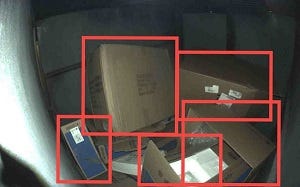11+ Contaminants in Your Recycling Stream You Can Now Track Remotely
September 15, 2019
![Compology-Contaminants-1560x800-v1[2].jpg Compology-Contaminants-1560x800-v1[2].jpg](https://eu-images.contentstack.com/v3/assets/blt4a147f9e36f0754a/bltd988966f24d9baf0/65200d871be3f524f82a4eba/Compology-Contaminants-1560x800-v12.jpg?width=1280&auto=webp&quality=95&format=jpg&disable=upscale)
A wake up call
No matter where you fall within the recycling ecosystem, contamination has likely kept you up at night more than once. Why? The average contamination rate among communities and businesses sits at around 25%, according to Waste Management, meaning roughly 1 in 4 items placed in a recycling container is actually not recyclable through curbside programs, creating enormous problems for the recycling economy. At the same time, China’s contamination ban is putting future profitability in question.
Most waste collection and processing companies are trying to answer the questions:
1. How do I cover the cost for the collection and processing of contaminated material?
2. How can I provide better education to my customers to improve their recycling practices?
AI-powered contamination identification is here
One answer to the contamination conundrum comes from AI-powered camera technology that remotely monitors for and identifies container contaminants, and also provides waste generators with timely, targeted education on recycling missteps.
Remote contamination monitoring ultimately allows both haulers and commercial generators to not only operate more efficiently while decreasing overall contamination to better control costs, but also track disposal habits and plan for improvement together over time.
Relying on its more than 40 million collected and analyzes waste container images across the U.S. Mexico and Canada, Compology has been able to expand its contamination and content identification capabilities to capture:
Garbage bags
Tanglers (wires, packing straps, hoses, stringed lights, etc.)
E-waste (TVs, speakers, appliances)
Propane tanks
Styrofoam
Bulky Items (pallets, furniture, tires)
Wood (tree branches, construction scraps)
Uncollapsed cardboard boxes
Concrete & soil
Metal form factors (turnings, piping, stamping, mixed materials)
People
Compology’s ability to identify both contents and highly-problematic items helps commercial haulers clean up the recycling stream, bill appropriately for contamination and avoid inefficient MRF operations and safety issues.
The company’s contamination identification technology, CScoreTM, not only automatically identifies various contaminants through image capture and review, but also provides a standardized measure of contamination. A CScore is the number of pieces of contamination divided by the total volume of material in a dumpster. The closer CScore is to zero, the cleaner the material. It can be calculated across any number of dumpsters over any period of time.
Using CScore, Compology’s customers have drastically reduced contamination and increased revenue from their recycling operations, and its list of high-priority contaminants will continuously grow as the team learns more specific needs of future customers.
Compology can also identify contents such as uncollapsed boxes to inform waste generators of poor disposal habits that impact operational costs.

Roll-off haulers can use Compology to identify items such as propane tanks to improve safety and items like tires to avoid contaminated pickups.

Meet who’s using it
The positive response and adoption of contamination identification and scoring technology has already helped some pioneering haulers to establish more profitable recycling and organics services, while helping generators drive towards their Zero Waste and diversion goals.
Waste Management Area Manager for the Pacific Northwest, Jason Rose, confirmed that in their first five months working with Compology, they’ve seen a 60% reduction in contamination.
“The majority of our customers choose to either clean [the contamination] up or have us pick it up and bill them appropriately, that’s about 95%. The other 5% have us pick it up as MSW and we bill them appropriately,” says Rose. “In the end, it’s all about sustainable leadership. We’re very focused on using data, technology, and innovation to work closely with our customers to really make recycling sustainable and cost-effective for the long-term.”
Compology has also partnered with Livermore Sanitation, which has seen the rate of organic waste contamination, mostly from local restaurants, drop by 80% in six months.
Hear more about the impact contamination identification and scoring technology can have on your recycling operations.
You May Also Like


.png?width=300&auto=webp&quality=80&disable=upscale)